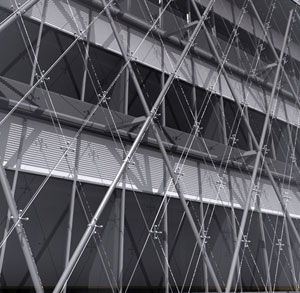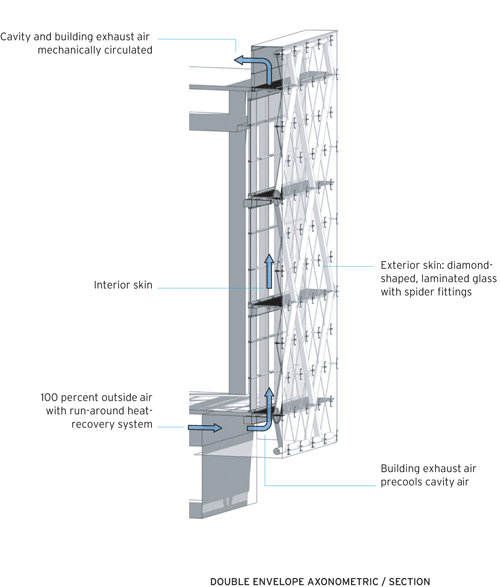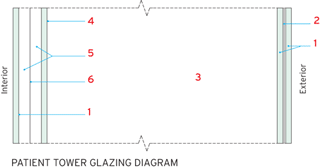Transparency: Literal and Sustainable
Learning Objectives:
- Explain the physical properties of glass that affect transparency and environmental performance.
- Identify recent technical advances in glass production.
- Describe facade design strategies that can optimize transparency, energy efficiency, and daylighting.
- Identify analysis and simulation tools used in facade and daylighting design.
Credits:
In 1929, when Le Corbusier set about designing the double-skinned glass curtain wall for the Cité de Refuge in Paris, he had no facade consultant to write the glass specification. It wouldn't have mattered anyway, since the spec would have been one word: clear. Two panes of clear glass defined a cavity, in which Le Corbusier had planned to supply tempered air with a mechanical ventilation system. Think of it as transparent insulation. However, the client eliminated the double skin, kept the single glass layer sealed tight, and instead fed the air directly into the building. With no return-air path, it didn't work. And the single layer of glass, totally exposed to the sun, failed miserably. Years later, the architect added a brise-soleil to cut the solar heat gain and prevent occupants from overheating.
"Le Corbusier didn't have access to [software like] EnergyPlus," jokes facade consultant George Loisos, AIA. Loisos's comments are part of his explanation of the myriad tools for specialized analysis he and his colleagues at Berkeley, California−based Loisos + Ubbelohde (L+U) have applied to building design. EnergyPlus-the U.S. Department of Energy's free software for modeling high-performance green buildings-is only one of those many tools.
Loisos's partner, Susan Ubbelohde, likens the firm's energy modeling and daylighting work on a new hospital in Abu Dhabi for the Cleveland Clinic, designed by HDR Architecture, to a technological update of Le Corbusier's approach. "The building science and energy worlds are quite worried about the glass building syndrome," she says, adding that architects have moved beyond the glass box and are becoming more interested in complex and layered facade systems.
History demonstrates that, at least since Joseph Paxton, building designers have been fascinated with transparency. What's changed since Paxton built the Crystal Palace in London in 1851 and Modernism emerged in the early 20th century is how architects and their consultants achieve transparency and how they measure success. As glass has evolved, so has its expression. The Cleveland Clinic exemplifies this shift as its 360-bed patient tower appears firmly rooted in the Bauhaus tradition with spandrel panels articulating each slab level, a continuous glazing system wrapping the corners, and with its diagrid curtain-wall system explicitly revealed. And yet, this reading relates only to the building's structural and envelope systems, not to an understanding of the intangible performance of those systems.
 |
|
 |
A double-skinned curtain Images courtesy HDR and |
 |
|
 |
1.Low-iron glass with  |










